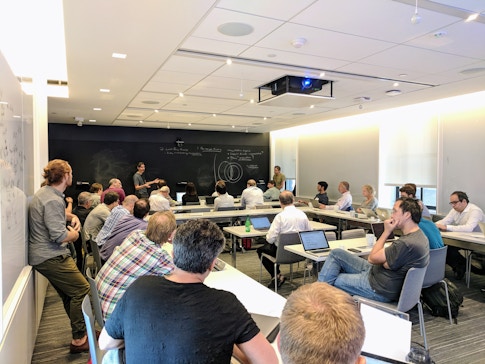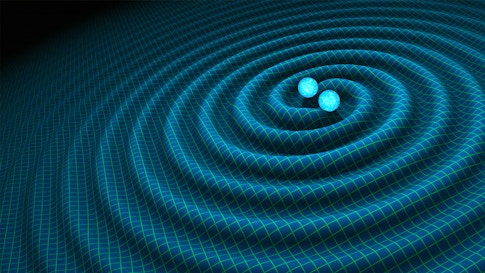Flatiron Institute Hosts National Science Foundation Workshop on the Plasma Physics of Neutron Star Mergers

On August 17, 2017, scientists witnessed one of the most dramatic collisions in the universe. Two dense neutron stars had combined in a galaxy 130 million light-years away, generating ripples through space-time and emitting bursts of light. The observations of the event sparked scientific breakthroughs across many areas of cosmology, but many questions linger.
From October 1-3, 2018, experts gathered at the Flatiron Institute to discuss the biggest outstanding questions and the most promising research opportunities surrounding the physics of neutron star mergers. The gathering, hosted by the Flatiron Institute’s Center for Computational Astrophysics (CCA) and supported by the National Science Foundation, focused on the plasma physics and magnetic processes associated with neutron star mergers.
Key questions included the evolution of the magnetic fields of neutron stars before and after a merger. “In this room, there’s probably half of the world’s expertise on this problem,” said Yuri Levin, who leads the Compact Objects group within CCA.

The workshop brought together astrophysicists and plasma physicists from the New York City area and from around the world. Astrophysics and plasma physics are traditionally disconnected, and the event fostered opportunities to collaborate and share knowledge, says CCA associate research scientist Matteo Cantiello. Astrophysicists quickly realized that they could better tackle the most challenging theoretical and computational aspects of neutron star mergers by working hand in hand with plasma physicists, Cantiello says.
At the end of the meeting, the scientists generated a list of ‘grand challenge’ problems and identified research areas where significant progress could be made over the next five to 10 years.
CCA hosted a similar meeting in November 2017 that assembled neutron star experts from around the world to discuss the latest findings and outstanding questions. That meeting was one of the first times that experts from around the world came together following the public announcement of the neutron star merger just a month earlier.


